Nikon AF-S Nikkor 24mm f/1.4G ED Review
-
Ease
of Use -
Sample
Images -
Lens
Specs -
Rating &
Conclusion -
Main
Rivals -
Review
Roundup - Comment
-
More…

Introduction
Announced earlier this year, the AF-S Nikkor 24mm f/1.4G ED is Nikon's fastest ultrawide lens to date (and its widest f/1.4 lens at the same time). Designed for professional photojournalists and landscapists, the lens features Nano Crystal coating to reduce reflections, and a Silent Wave Motor (SWM) for quiet focusing. Boasting two aspherical and two extra-low dispersion lens elements, the Nikon AF-S 24mm f/1.4G ED is available for $2199.95/£1949.99 in the USA and the UK, respectively.
Ease of Use
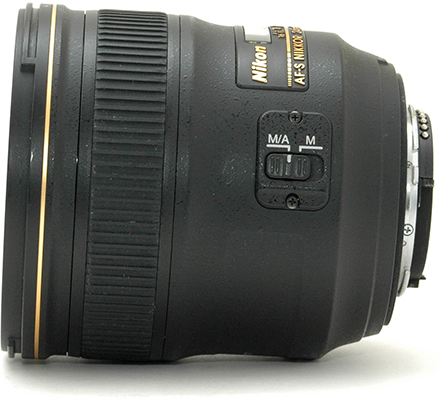
For a short prime, the Nikon AF-S Nikkor 24mm f/1.4G ED is a rather big and heavy lens; albeit still slimmer and lighter than Canon's comparable EF 24mm f/1.4L II USM. While you can use it on a DX body for a 36mm equivalent angle of view, it won't balance well – as demonstrated by the image below, it can even make the professional-grade, full-frame D3 front heavy.
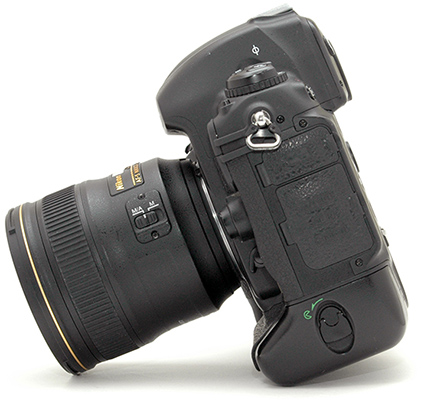 The Nikon 24mm f1.4G lens makes even a Nikon D3 front heavy
The Nikon 24mm f1.4G lens makes even a Nikon D3 front heavy
As you would expect from a lens that costs this much, build quality is very good. The lens feels solid in your hand, even if the outer barrel and the filter thread appear to be plastic. The focusing ring is just as wide as it needs to be, and has a ridged, rubberised grip band. As this is a G series lens, it has no aperture ring – no big deal unless you wanted to use it on a very old film body.
 Front of lens, isometric view
Front of lens, isometric view
The lens features a distance scale complete with a DOF scale, although the latter is of limited use, having markings for f/11 and f/16 only. Left of the focus index is a small dot that appears to be an infrared focus index.
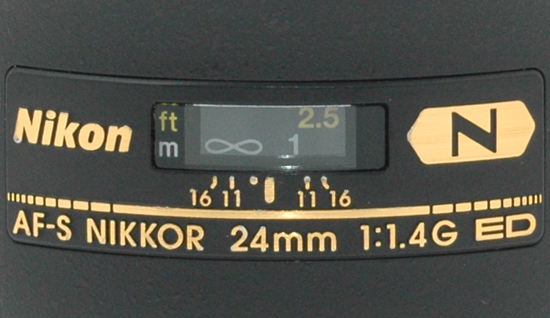
Since the Nikkor 24mm f/1.4 does not have Vibration Reduction, the only control on the lens barrel is a focus mode switch with the usual M/A and M settings.
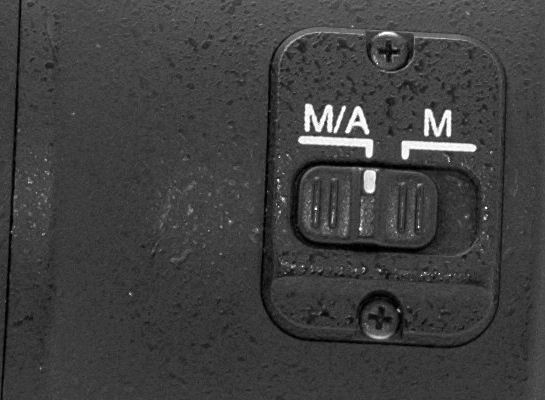
The Nikon AF-S 24mm f/1.4G is sealed against dust and moisture, so it's a great companion for similarly sealed bodies even when they are used in dusty locales or less-than-ideal weather conditions.
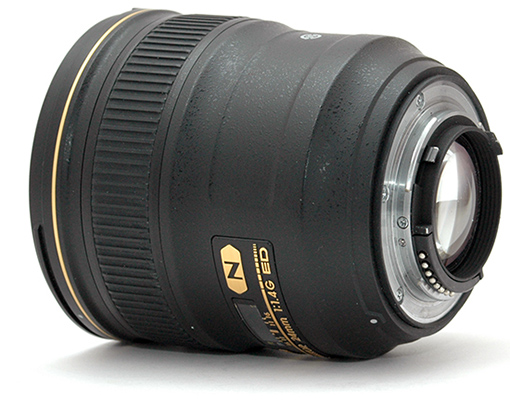 Rear of lens, isometric view. Note the rubber seal around the lens mount.
Rear of lens, isometric view. Note the rubber seal around the lens mount.
The lens ships with the dedicated HB-51 hood, but it was not provided to us for this test.
Auto-focus
The Nikon 24mm f1.4 features a Silent Wave Motor (SWM) that allows near-silent auto-focusing on all Nikon DSLRs. Importantly, this solution allows instant manual override even when the focus mode switch is in the M/A position. Focusing is fully internal, meaning the length of the lens always remains constant.
In use, we found the focusing to be indeed very-very quiet, and pretty fast – but definitely not instantaneous –, with the lens mounted to a Nikon D3 body.
A note of warning: back- or front-focusing may occur with any SLR lens-body configuration, and an f/1.4 lens will show this mercilessly when used wide open. If your camera has AF fine tuning, it is well worth shooting a test target to determine how much – if any – micro adjustment is needed to compensate for any such issues. For instance, our review combo had a quite pronounced back-focus problem when using phase-detect auto-focus.
Chromatic Aberrations
Chromatic aberrations, typically seen as purple or blue fringes along contrasty edges, are impressively well controlled with this lens – the examples below show the worst-case scenario.
 |
 |
Light Fall-off
With the lens wide open, you can see some very noticeable light fall-off in the corners. Stopping down helps, although to completely get rid of this phenomenon, you will need to use an f-stop of f/5.6 or smaller.

Flare

Flare is a typical problem with ultrawide lenses, so we were curious to find out how the Nikon 24mm f/1.4G fared in this respect. As this example shows the Nano Crystal Coat is effective in preventing veiling flare, but it cannot fully eliminate unwanted reflections when shooting against strong backlight. There is a large flare spot – which you can see better in the 25% crop below – as well as a couple of rainbow dots, such as the one in the second, 100% crop presented here.
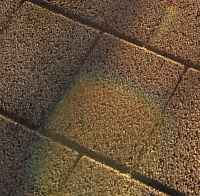 |
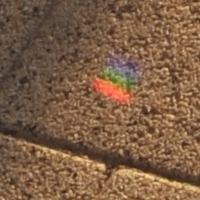 |
Macro
The Nikon 24mm f1.4 is not a macro lens. The close-focus point is at 25cm from the film/sensor plane, and Nikon quotes a maximum reproduction ratio of 0.18x for the lens. In our measurements, the actual magnification was fractionally greater at 0.19x. The following example illustrates how close you can get to the subject, in this case a CompactFlash card.
 Close-up performance
Close-up performance
Bokeh Examples
Bokeh is a word used for the out-of-focus areas of a photograph, and is usually described in qualitative terms, such as smooth / creamy / harsh etc. One of the reason to buy a fast lens is to be able to isolate the subject from the background, which is normally very hard to do with an ultrawide lens. Nikon was apparently very much aware of this requirement, as they employed an iris diaphragm with 9 rounded blades for a pleasing rendering of the out-of-focus highlights. Based on what we have seen, we can say that they largely succeeded. Below you'll find some examples, but you are also encouraged to check out our sample images.
 |
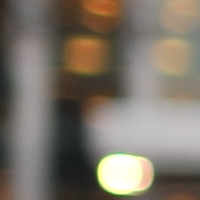 |
 |
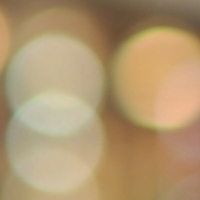 |
Sharpness
In order to show you how sharp this lens is, we are providing 100% crops on the following page.
-
Ease
of Use -
Sample
Images -
Lens
Specs -
Rating &
Conclusion -
Main
Rivals -
Review
Roundup - Comment
